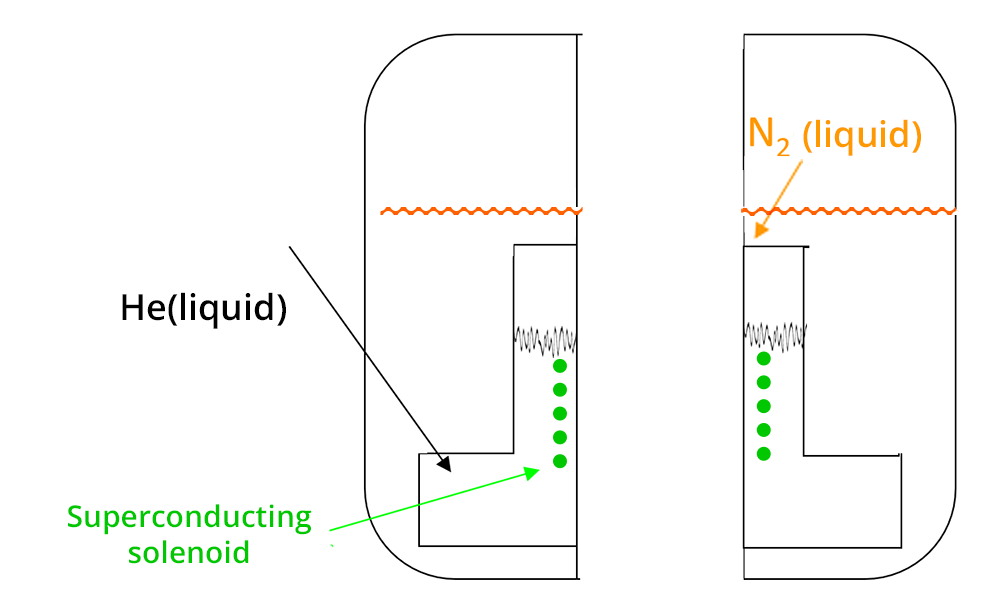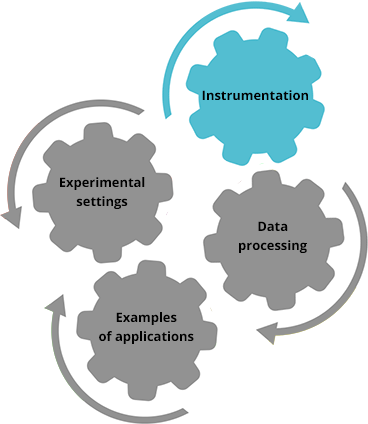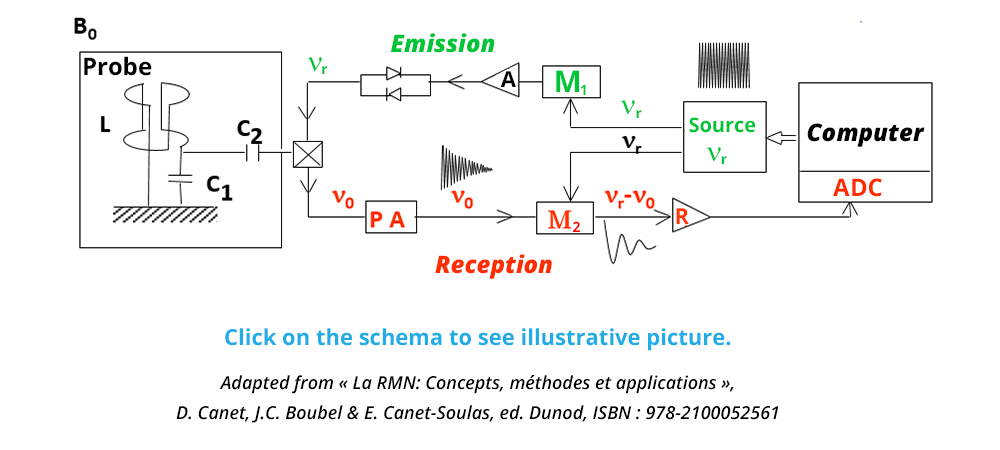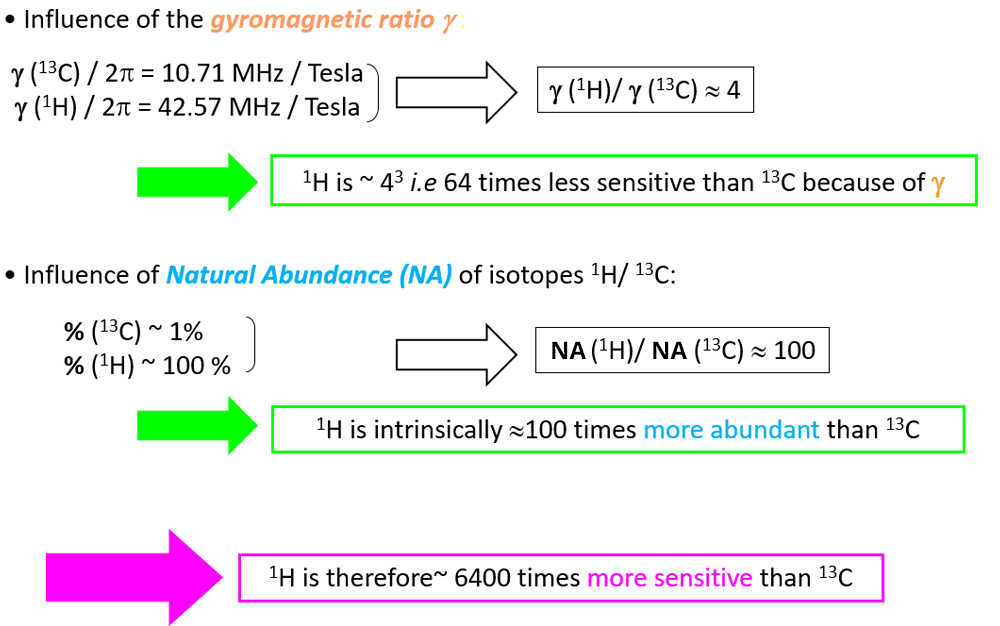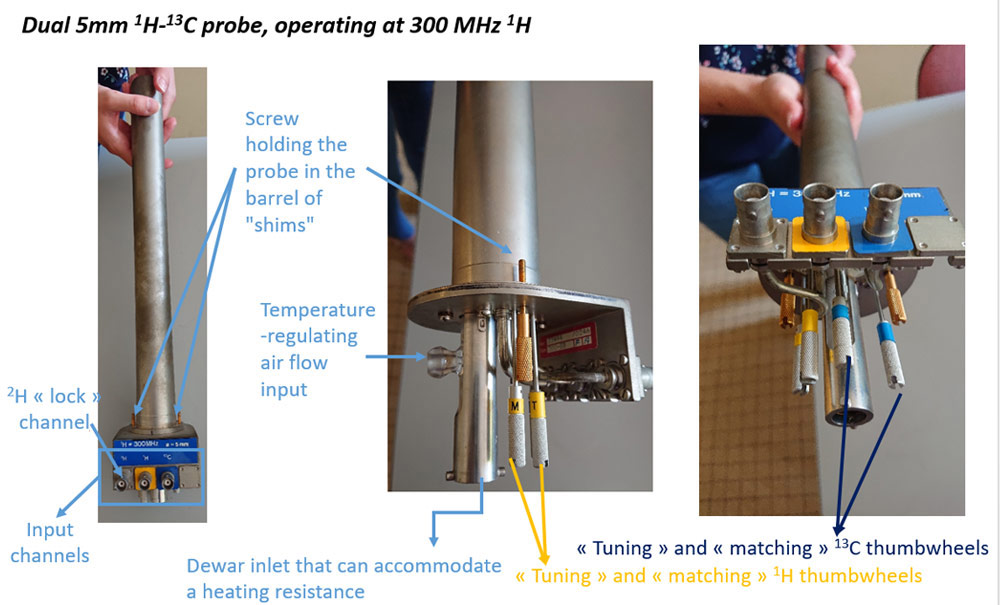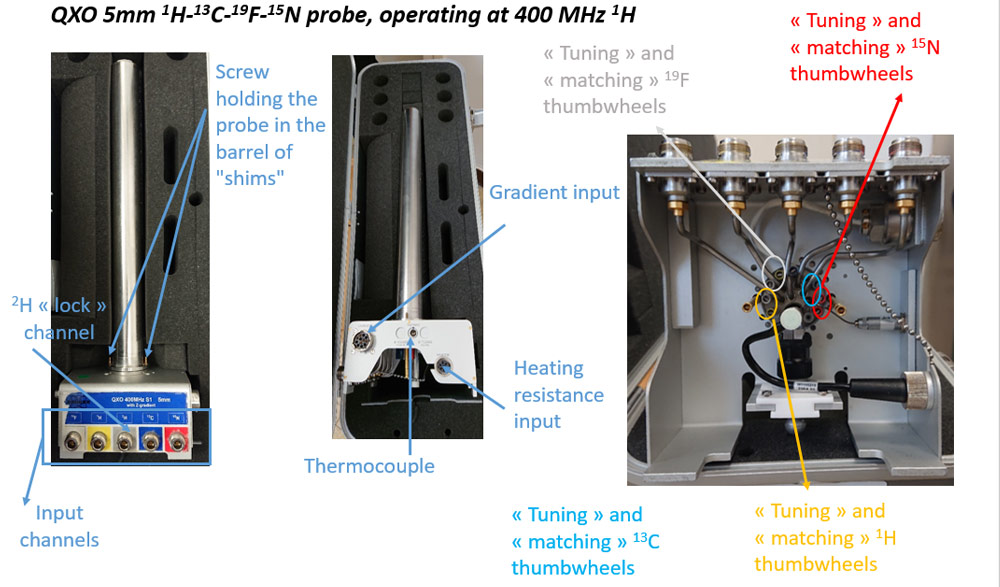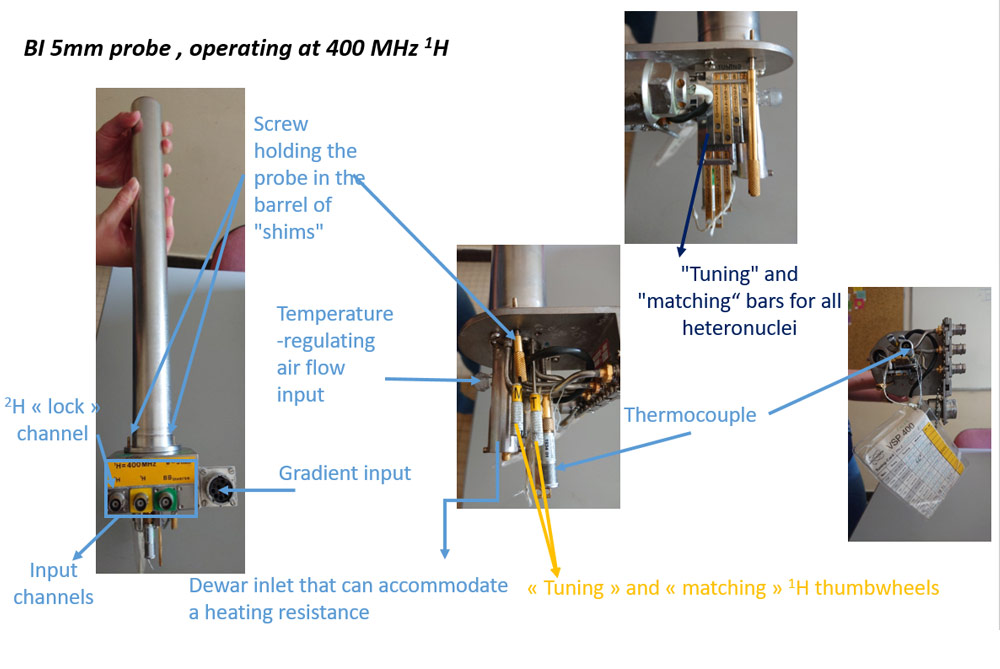Instrumentation
Schematic diagram of a pulse spectrometer
In an NMR experiment, the sample is first introduced into the measuring probe, which is installed in the shim barrel of the superconducting magnet. At the console (computer) the experimenter controls a sequence of radio frequency pulses transmitted by the transmission chain to the sample installed in the spectrometer console. The transmitted pulse sequence excites the sample via the LCR circuit whose transmit-receive coil is the main component. Once excited, the entire pulse pattern is completed, and the sample relaxes, thus providing the free precession NMR signal or Free Induction Decay (FID). This analogic signal induces a variation in the magnetic flux in the transmit-receive coil. This variation is pre-amplified, detected and digitally converted in the receiving chain. The spectrometer console consists of all the electronic elements useful to the NMR signal except for the pre-amplifier (PA).
Transmission chain: source, modulator (M1), anti-parallel diodes bridge, saddle-shaped transmit-receive coil
Reception chain: saddle-shaped transmit-receive coil, pre-amplifier (PA), demodulator (M2), amplifier, analog-to-digital converter (ADC)
The “shims barrel” or Room Temperature Shim Coil System
The “barrel of shims” consists of two complementary parts attached to each other in the center of the magnet. The bottom part accommodates the measuring probe into which the lower part of the NMR tube is inserted, having travelled from the upper part of the “shims barrel”. A compressed air lift system is used to introduce and remove the sample in a rotor without breakage.
The “shims barrel” consists of several coils of copper wire, the geometries of which allow for local control of the geometry of the small magnetic fields generated.
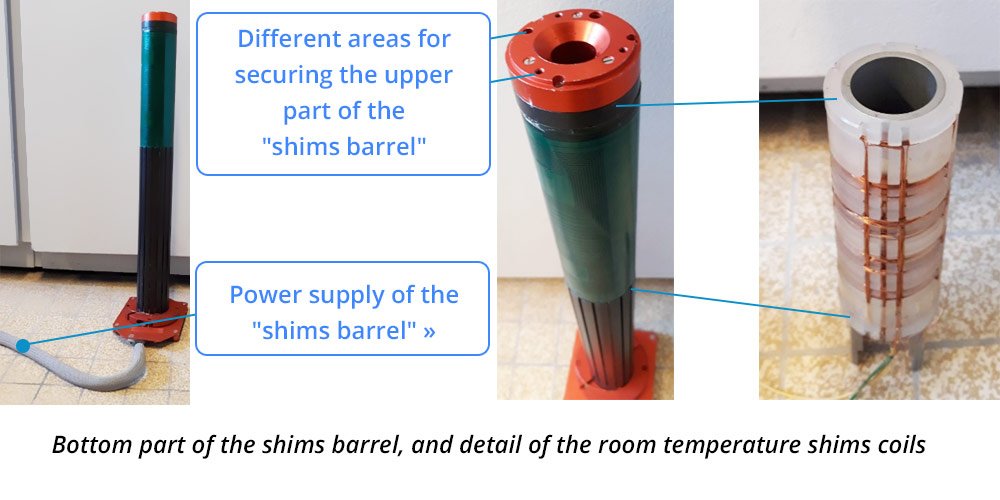
NMR probes or measuring heads
The NMR probe (or measuring head) is a central element of the NMR experiment. Specifically, it consists of a transmitter-receiver coil of inductance L. In emission mode, the coil transfers the radiofrequency excitation at the frequency νr to the sample. The disturbed sample returns to its equilibrium state at its natural resonance frequencies, close to ν0. This generates a change in the magnetic flux detected by the coil in its role as a sensor. The signal is then transmitted to the rest of the detection chain. The coil is not a solenoid: it has an optimized saddle-shaped geometry.
In MRI, a measuring probe is still commonly referred to as an NMR antenna. As with all antennas, the transmission and reception of the signal must be as perfect as possible, and adapted to the signal under study. Thus, the coil is accompanied by two capacitors of C1 and C2 capacitance which must be optimized at each experiment for each nucleus. The set {L, C1, C2} is an adaptable ν0 -oscillating circuit.
There are different types of probes. Their choice is crucial to optimize the quality of the acquired signal. This choice essentially depends on the nuclei excited, which induce the acquired signal, but also on the sampling, the experiments set up, and the temperature.
We can distinguish:

- "Direct or Observe" probes from "inverse" probes: when a sensitive nucleus such as 1H, is acquired, the inverse probes are preferred. Example: BBI or TBI probes are inverse probes while QXO or BBO probes are observe or direct probes.
- The multinuclear probes of the selective probes. Multinuclear probes have a single channel (X "broadband") to excite all heteronuclei, whereas selective probes possess as many selective channels to a given nucleus as excitable nuclei. Example: The BBI or BBO probes are multinuclear probes while Dual 13C – 1H or QXO 1H-15N-13C—19F probes are selective probes for certain nuclei.
- Probes of different diameters: Standard diameter (tubes o. d. 5 mm), optimized probes for samples of smaller diameters (metabolomic and proteomic NMR) or larger diameters (lack of sensitivity).
- Probes for applications at high temperatures (> 450 °C) or low temperatures
- Probes for solid samples, HRMAS that allow for the very fast rotation of the sample at the magic angle to eliminate the anisotropic contributions of NMR interactions, from probes for liquid samples.

The magnet
There are basically two types of magnets: electromagnets and superconducting magnets. In NMR, the magnets currently used are almost exclusively superconducting.
- Electromagnet: B0 max ≈ 100 MHz for the 1H (2.4 Tesla)
- Superconducting magnet: B0 max ≈ 900 MHz for the 1H (21.1 Tesla)
- Nb/Sn alloy
- In a helium bath at 4 K,
- Immersed in a nitrogen bath at 77K
